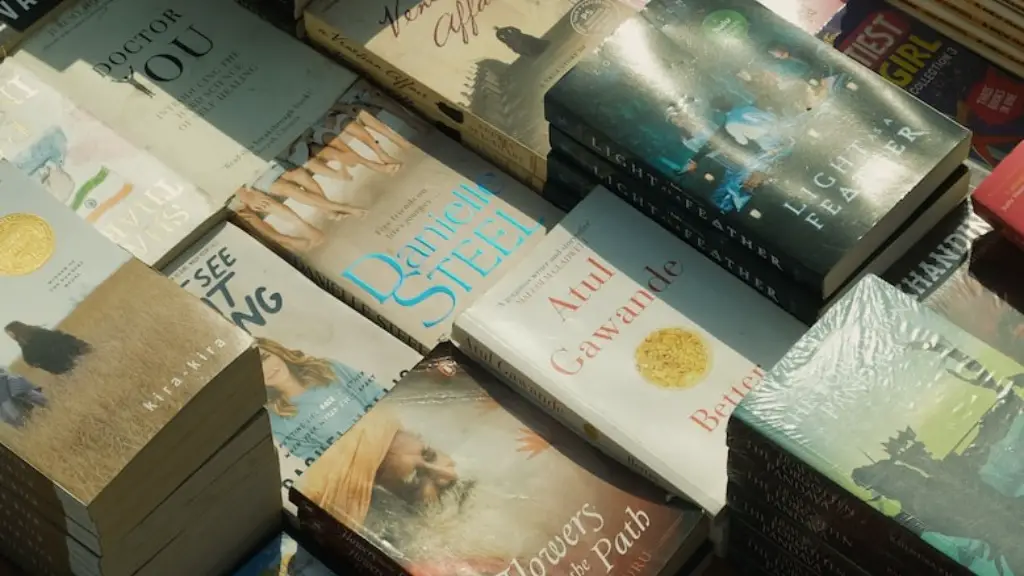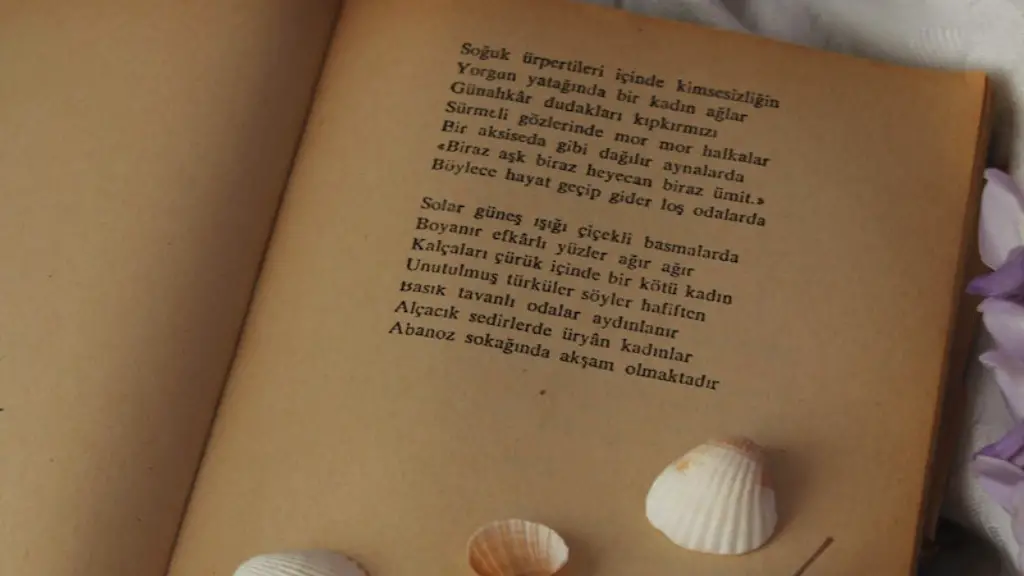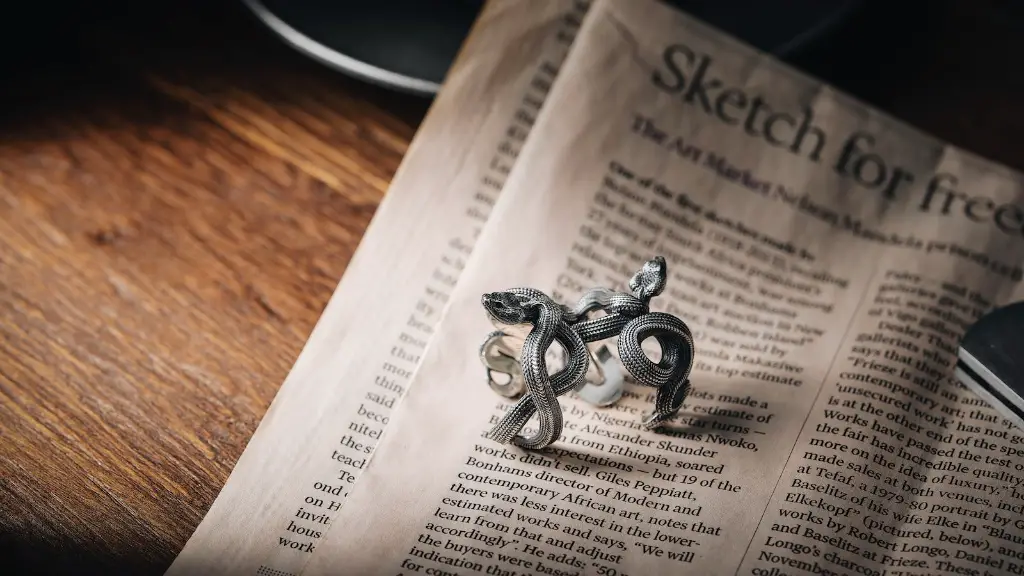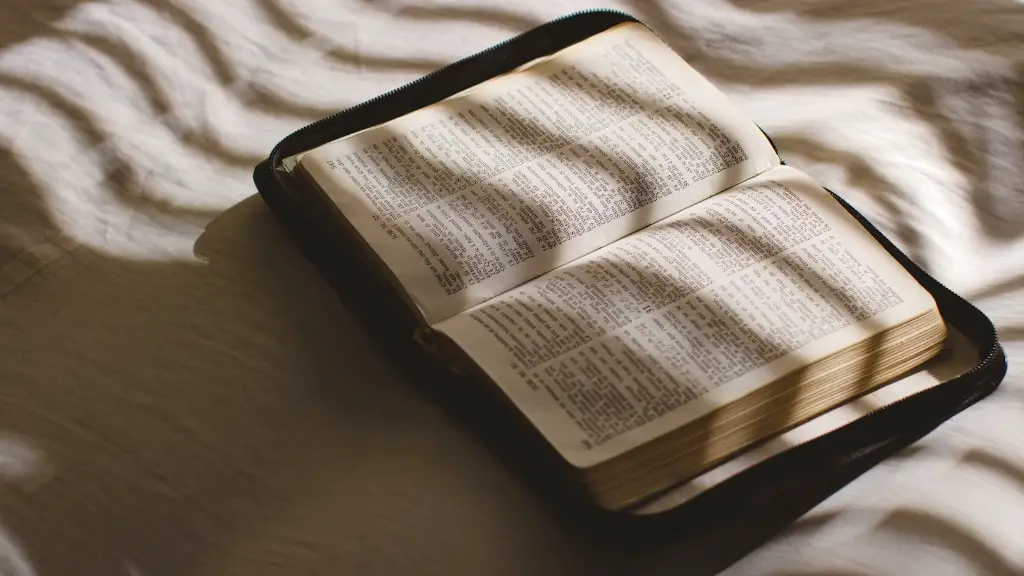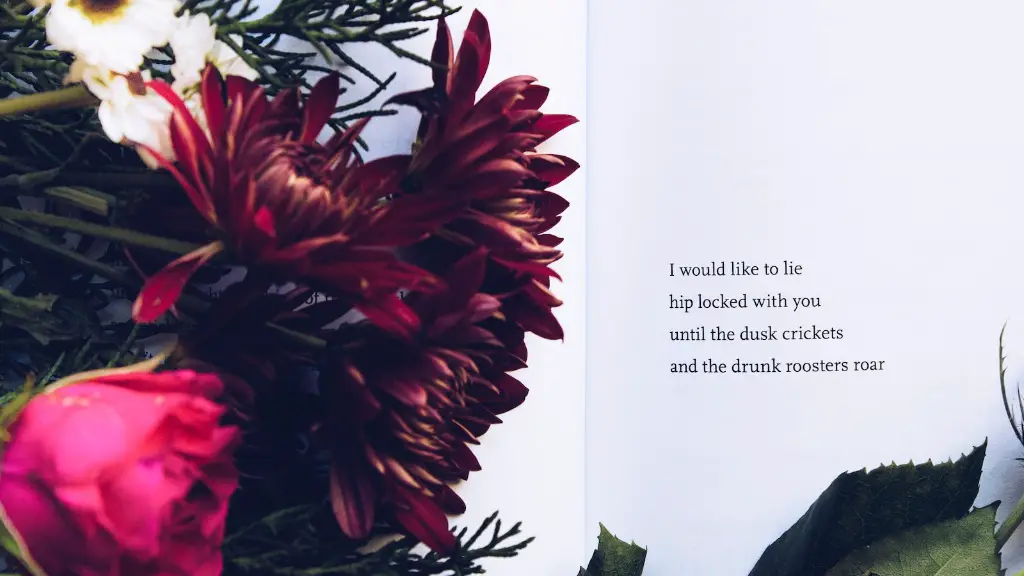What is a controlling image in poetry? A controlling image is an image that controls the poem’s content and form. It is an image that is used to represent a deeper idea or feeling in the poem. A controlling image can be a single word, phrase, line, or even a few words. It is a powerful tool for authors, used to express ideas without having to build up a long-winded argument. It also serves to structure a poem and give it a sense of completeness. A controlling image can also be used to give a poem a more subtle tone, by creating a certain atmosphere.
The most common controlling images are symbols, metaphors, personification, and imagery. Symbols are objects or concepts that represent an idea. They can be used to create a vivid, imaginative understanding of the idea that is being explored in the poem. Metaphors are comparisons between two unrelated things where one of them stands in place of the other. Personification is when an object or concept is assigned human characteristics, making it easier to visualize and understand. Imagery is the use of vivid, descriptive language to evoke a mental image in the reader’s mind.
When used effectively, a controlling image can have a profound impact on the reader. It can create a certain mood and give the reader a sense of completeness. It can also provide a deeper understanding of the poem, by presenting a concept in a way that engages the reader and encourages them to think more deeply about the poem’s meaning.
However, it is important to use controlling images with caution. If used too often or too heavily, they can become distracting and can take away from the poem’s overall message. Controlling images should be used sparingly, and should always be relevant to the poem’s theme. When done right, a controlling image can be a powerful tool that can help make a poem more memorable and powerful.
Examples of Controlling Image in Poetry
To understand how a controlling image can influence a poem, let’s look at some examples. One of the most famous examples is William Butler Yeats’ “The Second Coming”. In this poem, Yeats uses a controlling image of an eagle to represent the changing nature of society. By using an eagle, he evokes feelings of freedom and power. The eagle is a powerful symbol of strength and endurance and its presence throughout the poem suggests a sense of unease, a warning that something is about to happen.
Another example is Robert Frost’s “The Road Not Taken”. In this poem, Frost uses a controlling image of a “path” to represent the choices one must make in life. The idea of a path implies a journey, something that has a beginning and an end. This controlling image helps to reinforce the poem’s message of embracing life’s decisions and carving out your own path.
Finally, William Wordsworth’s “The World is Too Much With Us” uses a controlling image of a “sea” to represent the overwhelming and destructive nature of industrialization. By using a sea, Wordsworth alludes to the idea of an unstoppable force. The sea can be powerful and unpredictable, much like the destructive power of industry. This controlling image helps to draw attention to the poem’s message of how humanity can quickly spiral out of control.
Controlling Image and Literary Genres
Controlling images are often used in different literary genres, including poetry, fiction, plays, and even non- fiction texts. In fiction, a controlling image can be used to create a certain atmosphere or tone. In a play, a controlling image might be used to evoke emotions in the audience. In non-fiction, a controlling image might be used to explain a concept in a more vivid and engaging way.
It is also possible to use multiple controlling images in a single work. Usually, these images work together to form a larger picture, each controlling image playing a part in creating the overall effect. In a poem, these multiple images can be used to build upon each other and give the reader a deeper understanding of the poem’s message.
The Power of Controlling Image in Poetry
The use of a controlling image in poetry is a powerful tool. It can help to create a vivid picture in the reader’s mind and evoke a certain emotion. It can also be used to add layers to a poem, allowing the reader to access different ideas and perspectives. Finally, a controlling image helps to structure a poem, giving it a sense of completeness.
At its core, a controlling image is a tool for expressing ideas, but when used with skill and creativity, it can be much more. It can be a way to engage the reader and to make a poem more memorable. To the reader, a controlling image can be a doorway to a world of deeper meaning and understanding, an invitation to explore the complexities of the poem.
Controlling Image in Poetry – Approaches and Techniques
When it comes to using a controlling image in poetry, there are no hard and fast rules. It is up to the poet to choose the right image for their poem and to find creative ways to use it. However, there are a few approaches and techniques to keep in mind when using a controlling image.
First, it is important to think about the purpose of the controlling image. Is it being used to create a certain atmosphere or tone? Is it being used to represent an idea? Is it being used to add layers of meaning to a poem? Answering these questions can help to inform the choice of image and the way it is used in the poem.
Second, it is important to think about what the image is representing. What characteristics or traits does it evoke in the reader? What deeper meaning or symbolism does it convey? Understanding the implications of the image can help to better convey the poem’s message.
Third, it is important to consider how the image is used in the poem. Is it used multiple times, or only once? Does it appear at the beginning or end of the poem? Does it appear as a metaphor or symbol? Does it appear at strategic points throughout the poem? Asking these questions can help to ensure that the image is used effectively in the poem.
Using a Controlling Image to Enhance Poetry
Using a controlling image in poetry can be a powerful tool for poets. It can add depth to a poem and make it more memorable and engaging. However, it is important to use it with caution. A controlling image should be used sparingly and it should always be relevant to the poem’s message.
When used effectively, a controlling image can add a unique element to a poem. It can evoke emotions in the reader and make the poem more powerful. It can also help to structure a poem, providing it with a sense of completeness. In this way, a controlling image can help make a poem more memorable and impactful.
